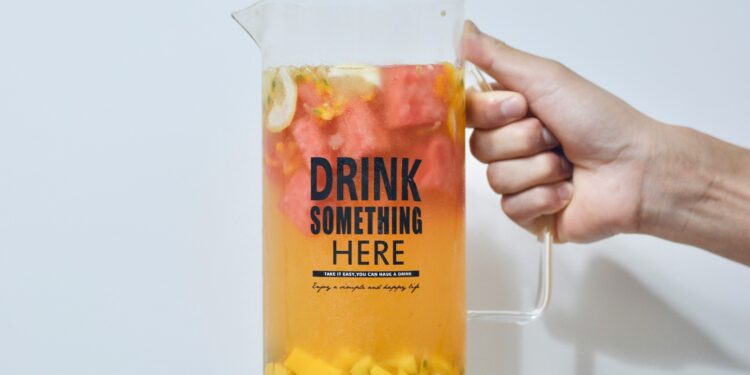Walk through a grocery aisle or scroll TikTok’s “wellness” corner, and hydration has never looked so stylish—or so expensive. Rows of functional beverages boast neon labels and lofty claims: “hydration at the cellular level,” “focus without the crash,” “restorative adaptogens,” and “electrolyte optimization.” From sleek aluminum bottles of electrolyte-infused spring water to adaptogenic non-alcoholic aperitifs with names like “Mind Bloom” and “Mood Sip,” the hydration game is no longer about quenching thirst. It’s about elevating wellness.
Functional beverages including electrolyte-infused water and non-alcoholic cocktails are in the spotlight because consumers are looking for healthier choices for hydration. However, how do you separate marketing fads from genuine clinical benefits? And from what criteria do you check for the product’s quality of health?
The Rise of the “Better-for-You” Beverage
Americans are drinking less soda, more water, and—perhaps most tellingly—more beverages that promise a little something extra. The global market for functional beverages was valued at $130 billion in 2022 and is projected to grow at over 7% annually through 2030, according to Grand View Research.
While this trend is partly driven by legitimate interest in healthier lifestyles, it’s also fueled by clever marketing that blurs the line between indulgence and supplementation. Many brands ride the wave of ingredient-based storytelling, centering buzzwords like “electrolytes,” “nootropics,” “adaptogens,” and “molecular hydration.”
But how do we know these ingredients actually work—or that they’re included in effective doses?
Hydration Science 101: Beyond the Buzz
At its core, hydration is a straightforward biological process: your body needs water, sodium, potassium, and other electrolytes to maintain fluid balance, support nerve function, and regulate temperature. For most people, plain water, supplemented by a balanced diet, provides more than adequate hydration.
Where functional beverages claim superiority is in adding electrolytes, amino acids, B-vitamins, or herbal extracts that supposedly optimize performance, cognition, or recovery.
However, many of these claims are tenuously supported by science:
- Electrolytes are only critical for hydration during intense exercise, heat exposure, or illness-related fluid loss. For sedentary consumers, these beverages may provide little added benefit and, in some cases, excessive sodium.
- Adaptogens like ashwagandha or reishi mushroom are often added to non-alcoholic cocktails for “stress support,” but human trials are limited and dosages in beverages are rarely standardized.
- Nootropics—ingredients that claim to boost cognitive function—often rely on compounds like L-theanine or GABA. While some studies suggest mild effects, they are context-specific and not well validated in casual beverage consumption.
As the National Institutes of Health Office of Dietary Supplements emphasizes, many of these compounds require more research, especially in the form they appear in beverages.
Ingredient Lists: What to Look For (and Avoid)
To assess the clinical quality of a functional drink, consumers should scrutinize three key aspects:
- Dosage and Transparency: Are the active ingredients listed with their actual amounts (e.g., “200mg L-theanine”) or are they hidden in “proprietary blends”? The latter is a red flag, as it obscures whether you’re getting a therapeutic dose.
- Scientific Backing: Has the ingredient been tested in peer-reviewed, human trials? For example, coconut water has credible rehydration benefits post-exercise, but colloidal silver and chlorophyll water, despite their popularity, lack rigorous support and may even pose health risks.
- Sourcing and Additives: Are ingredients derived from whole foods, or are they synthetic? Also examine sweeteners: many “healthy” drinks include sugar alcohols or artificial flavors that can irritate the gut or mask poor formulation.
Functional drinks should not be judged by their label design or brand ethos, but by clinical relevance and biochemical plausibility.
The Mocktail Movement: A Mixed Bag
The wellness beverage boom isn’t just about hydration—it’s also about social ritual. Non-alcoholic cocktails (or “mocktails”) are surging in popularity as younger consumers embrace sober-curious lifestyles. Companies like Kin Euphorics, De Soi, and Ghia offer mood-boosting drinks with packaging and price points similar to boutique spirits.
Many of these drinks claim to support relaxation, focus, or stress resilience through herbs like rhodiola, schisandra, and holy basil—all adaptogens with limited but intriguing data.
However, according to a 2023 review in The American Journal of Clinical Nutrition, adaptogens often lack standardized extraction methods, making their effects highly variable. In some drinks, their quantities may be too low to have meaningful physiological impact.
More importantly, some drinks capitalize on the absence of alcohol as a health benefit, while quietly packing in added sugars or artificial flavoring to compensate for taste—a bait-and-switch that undermines their wellness narrative.
Placebo, Ritual, and the Psychology of Consumption
It’s worth asking: if a drink feels good, does it matter whether it’s clinically effective?
There’s no denying that rituals of wellness carry psychological power. A beautifully branded can with a health-forward message can enhance feelings of control, calm, and routine. In the context of behavior change—like replacing sugary soda or alcoholic drinks—this can be a positive force.
But health outcomes should not rely solely on aesthetics and placebo. Without standards for formulation and labeling, the functional beverage space risks becoming a wellness echo chamber, where the illusion of efficacy is enough to drive repeat purchases, even when science lags far behind.
Regulation: The Missing Piece
Unlike pharmaceuticals or even over-the-counter supplements, beverages with health claims exist in a regulatory grey area. The FDA does not require pre-market approval for drinks labeled as “functional,” unless they make explicit disease treatment claims.
This leaves enforcement in the hands of consumer watchdog groups and trade associations, who often lack teeth. Until clearer regulatory frameworks are enacted—perhaps akin to Europe’s EFSA—the burden remains on consumers and journalists to ask critical questions.
Conclusion: A Call for Evidence-Driven Sipping
The rise of functional beverages reflects a broader cultural shift toward health empowerment, but empowerment without education is exploitation. Consumers deserve better than ambiguous claims wrapped in chic typography.
The next time you reach for a mood-enhancing spritzer or electrolyte-charged water, ask: Is this a supplement or a soda in disguise? What does the clinical literature say? And does my body need this—or does the brand want me to think I do?
Because hydration should begin in science, not in story.















